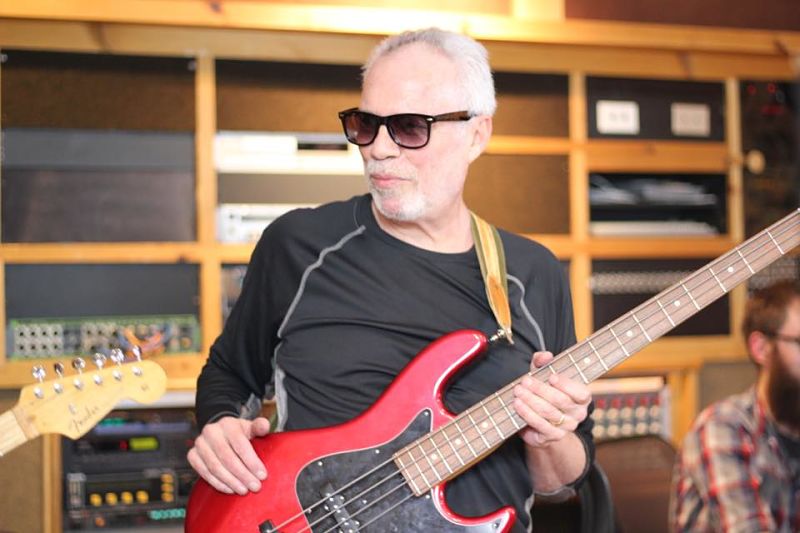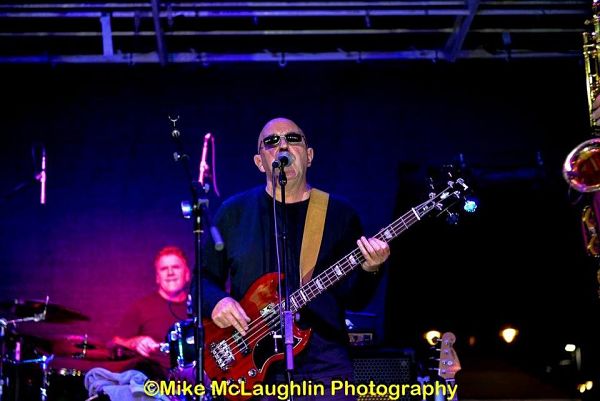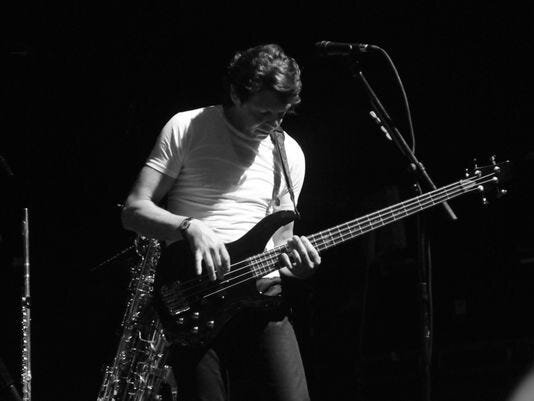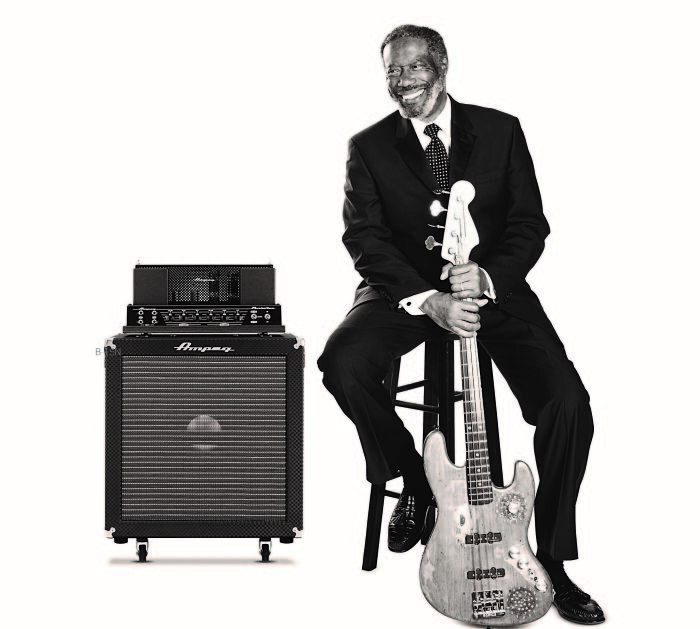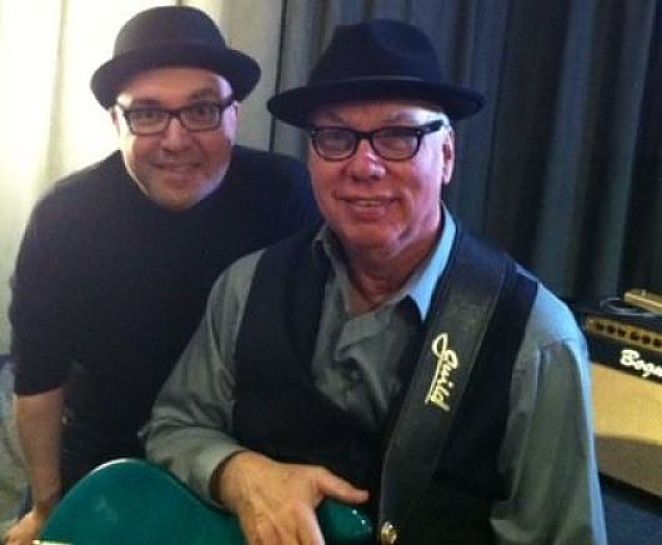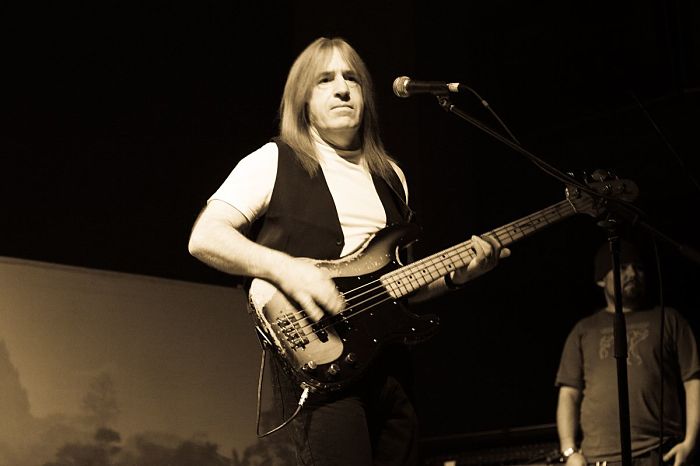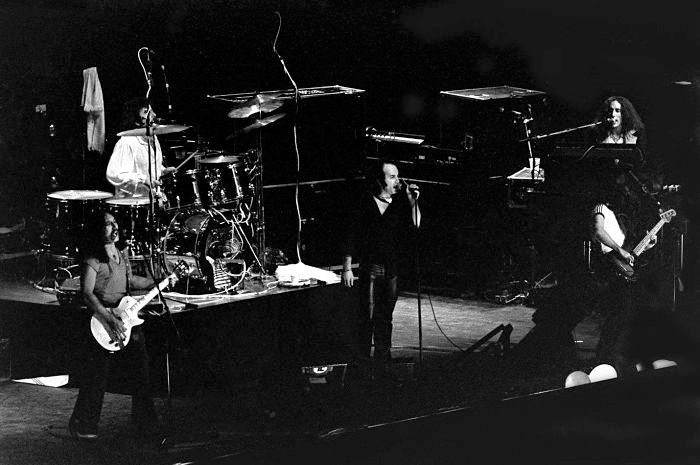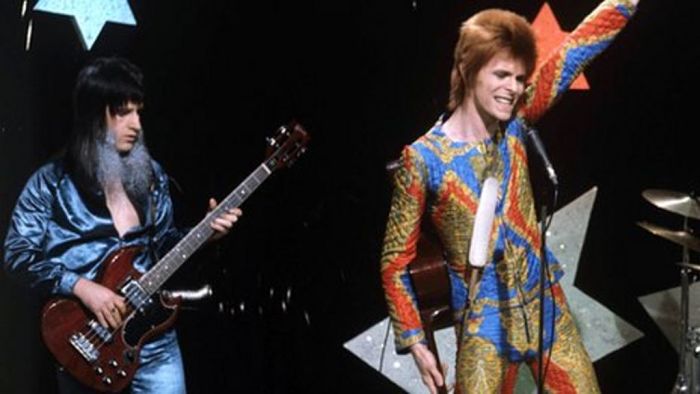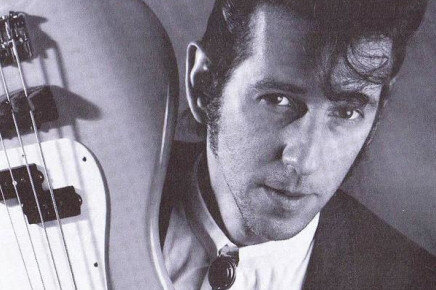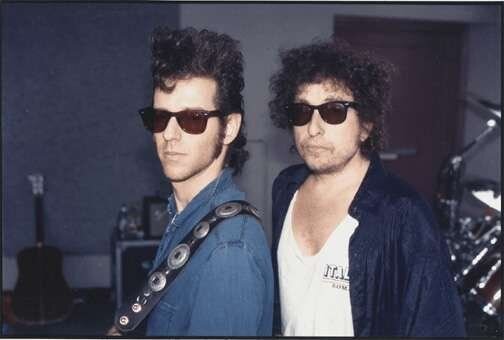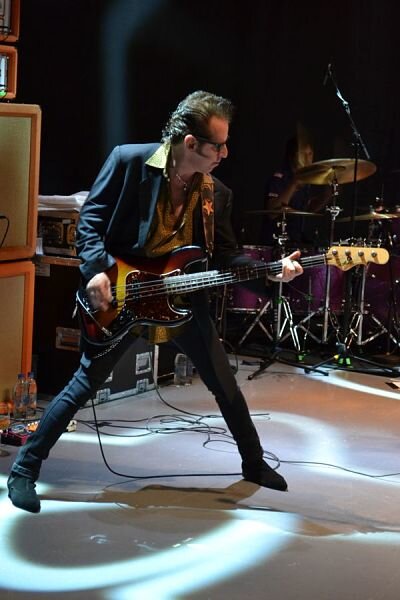John Lodge (Moody Blues)
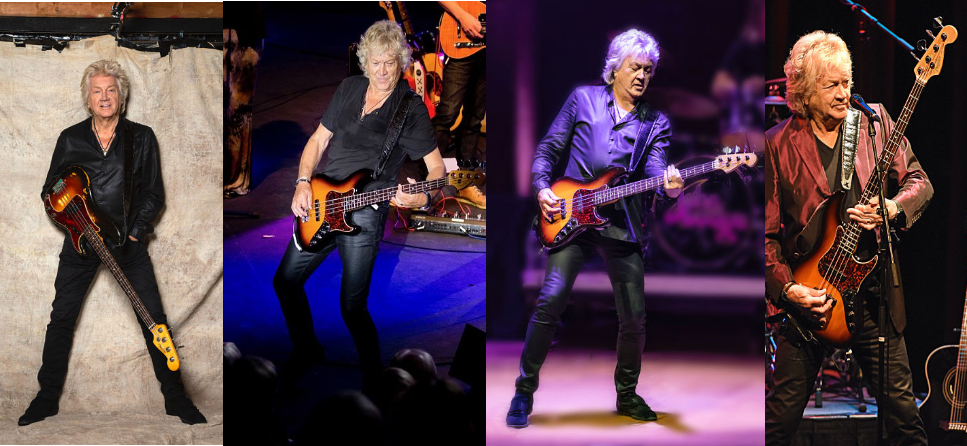
John Lodge photo Dana Grubb
By Joe Gagliardo based on a conversation with John Lodge
“A thousand pictures can be drawn from one word, only who is the artist, we got to agree….”
For five decades and counting John Lodge has been a successful bassist, songwriter, recording artist, producer, bandleader, collaborator, vintner – and he’s “just singer in a rock and roll band!
He has been cited among the “10 Most Influential Bass Players on the Planet,” and has been the recipient of numerous accolades, including an ASCAP (American Society of Composers and Publishers) Award, and an Ivor Novello Award for Outstanding Contribution to Music, to name just a few.
And the honors keep rolling in! John and The Moody Blues were inducted into the Rock and Roll Hall of Fame in 2018. In 2019, he was inducted into the Birmingham Walk of Stars for his contribution to his home city’s cultural heritage. Also in 2019, John was honored to receive the Lifetime Achievement Award at the Prog Awards for his work with the Moody Blues and his solo canon: big accomplishments for a kid who grew up in the West Midlands of England whose primary interests were soccer, a desire to design cars!
There were no singers nor musicians in John’s family, and no instruments, other than a broken-down piano that sat at his grandparents’ house. Things changed for John around the age of eleven when he saw Rock Around the Clock. That movie is considered to be one of the first (and finest) rock and roll musicals, starring Bill Haley and the Comets, Alan Freed, the Platters, and Freddie Bell and the Bellboys.
While that movie generated John’s interest in music, it was another rock and roll movie, The Girl Can’t Help It, which nailed it for him. That film featured his heroes, Little Richard, Gene Vincent and The Blue Caps, Eddie Cochran, and Fats Domino, among others. His love for music was further cemented upon hearing Buddy Holly’s “That’ll Be The Day” on a call-in television show wherein viewers voted for their favorite songs. These cumulative experiences made John want to play music.
A chance happening enabled John to get hold of his first guitar. His neighbor’s son had returned from Germany with an inexpensive steel-stringed acoustic guitar, and the neighbor asked John’s mom if she was interested in buying it for John, which she did.
As the American rock and roll stars John idolized on the silver screen reached iconic status in England; skiffle music was also massively popular in his home country. John taught himself skiffle (a genre of folk music with influences from blues, jazz, and American folk), but after seeing Buddy Holly perform live at the Birmingham Town Hall, he learned all of Buddy Holly’s songs. From Holly’s repertoire, John gained an understanding of chord and song structure and songwriting.
Lodge’s move to the bass guitar happened upon attending a concert by two performers that starred in the movies he loved, Jerry Lee Lewis and The Treniers.
Although Jerry Lee cancelled, the show went on with The Treniers, and John was there. While the band was playing, he noticed one of the members toward the back of the stage who appeared to be playing a white guitar akin to Holly. Then realized it only had four strings!
That was his first encounter with a bass guitar, and he immediately realized that the selections he chose as he dropped the coin right into the slot of the Rock Ola jukebox were songs that he liked because of the driving force of the left hand of piano players – namely Jerry Lee Lewis, Little Richard, Fats Domino and Johnnie Johnson, who tinkled the ivories for Chuck Berry. In fact, John later composed a song about that experience, “Those Days in Birmingham.”
Lodge started off with a Dallas Tuxedo which was one of the first basses mass-produced in the United Kingdom. He commenced to learning blues and boogie licks, especially focusing on the left hand of his favorite piano players. John’s training came primarily from listening to American recordings. Among his favorite passages is from “Crossfire” by Johnny and the Hurricanes.
His next bass was a Hofner President, but he found his quintessential instrument on a visit to Jack Woodruff’s music store on a Saturday morning in 1960. Approaching the venue, he noticed a bright and shiny brand-new sunburst Fender Precision bass in the window, with a sign that proclaimed, ‘Direct from the USA.” The cost was the equivalent of $500, and at the time, you could buy a new car for the equivalent of $600. John discussed the situation with his Dad, who agreed to co-sign for John finance that hallowed slab of wood, wire, and strings.
Why is this bass quintessential? It has been used on every song recorded by John as a member of The Moody Blues!
Previous to the Moody Blues, John and Ray Thomas worked a band called El Riot and The Rebels: Ray was “El Riot” and Lodge was one of the “Rebels.” Their moniker echoed popular bands of the era with names such as Nero And The Gladiators, and Johnny Kidd and The Pirates. Recalls John “and they all wore these great costumes. So, we had sombreros and it seemed to work for us very well.” That band lasted for four years.
In 1962, John was asked to be one of Gene Vincent’s Blue Caps on a tour of England. While that didn’t happen, John did write a song for Gene in the early ‘60s that, just a few years ago, was recorded for the Gene Vincent Appreciation Society.
When The Moody Blues were being formed, John was initially asked to join the band. Their intention was to be “professional” hence their move to London, the musical epicenter of the UK. However, John still had eighteen months of college to complete, and as John likes to finish things he starts, he declined. He told Ray Thomas he was going to fulfill his educational ambitions, and then “see what happens.”
While completing school, John anchored the John Bull Breed, a band that gigged at the Star Club in Hamburg, Germany, six weeks following The Beatles. It was a hard-working unit that played six grueling sets a night, and covered Ike Turner’s “Can’t Chance a Breakup” for Polydor records in 1966.
According to John, Ray Thomas contacted him about a year later, after the Moody Blues’ song “Go Now” had been a hit, and Denny Laine and original bassist, Clint Warwick, had left the band.
Ray asked John if he had finished college. When John replied the affirmative Ray commanded “well, get in the car and come down to London, we’re putting the old band back together!” Note that pre-Moodies, John, Ray and Mike Pinder had played in El Riot and the Rebels together.
John joined the band, followed shortly after by Justin Hayward. At that juncture, the band decided to make its own music: no more covers!
John, Justin and the band collaborated on what many consider to be the first progressive rock album, Days Of Future Passed. Back then, studio time was usually used in three-hour increments. However their imprint Decca not only manufactured records, but also gramophones, and the label was looking for a record in full-frequency stereo that would help sell both of its products.
As such, Decca allowed the Moodies the unprecedented opportunity to book a studio for seven days, twenty-four hours a day. When the recording was first played for the company, a number of the execs were confounded by it, but, luckily there were two people, one from London Records in America and the other from Decca Records in London who understood the band and their recording and got behind it.
The Moody Blues went on to sell over 70 million albums, which includes eighteen platinum and gold LPs. The forged Top 10 singles in three different decades.
Rock and Roll Hall of Fame: In their induction speech, Heart’s Ann Wilson discussed the impact the band had on her and her friends, and how the Moody Blues’ music could take you on a trip, and bring you back the same day. Ann told the audience “let’s not overlook the simple fact that The Moody Blues, are, and have been, a kick-ass rock band.”
Ann Wilson’s RRHOF Speech: https://youtu.be/s1HesvYu4LU
As a member of the Moodies, John has written several of the band’s classics. John composed “Ride My See-Saw” on his very first, steel-stringed, acoustic guitar. “Ride My See-Saw is about the fact that you’re going up and down—you learn a bit and you lose a bit. It was written about what you think life is growing up, and what life turns out to be….”
“I’m Just a Singer in a Rock and Roll Band” emanated from the signature bass riff. John likes playing that song because that’s who he is! He loves the energy and excitement of it, but the song came about because it was a strange time in the world in the 1960s, with the Vietnam War and everything else that was going on. People around the world were looking for answers, and “I suddenly thought…just a minute…I’m only a musician. I didn’t know the answers to the questions that people were seeking. I wanted to say that.”
Another interesting tale is the story behind “Isn’t Life Strange.” Among John’s friends was Lionel Bart, who wrote major musicals including Oliver. All of Bart compositions were done on on a baby grand piano, and he suggested that John buy one for writing purposes.
One night during dinner with his wife and friends, and he suddenly heard a melody in his head. In the middle of the meal, he excused himself and went to the piano and wrote the music and came up with the title for “Isn’t Life Strange” in about fifteen minutes. He calmly resumed his meal to proclaim, “I think I’ve written a song.”
Then the next morning, he played it again and authored the lyrics. “The song is all about how life sort of keeps repeating itself…isn’t life strange? You can’t really ask what the future’s got for you. You just turn the page over, move on, and see what happens…”
In addition to his work with The Moodies, John and Justin Hayward released the Blue Jays LP in 1975 while The Moodies were on hiatus following their Seventh Sojourn album. That collection included Lodge’s “Saved by the Music,” a hard-rocking track with stellar hooks and a beautiful, catchy chorus. That song was considered by many to be a highlight of the record. John still plays this song live today – and it garners instant crowd participation.
John has also released several solo collections. The first, Natural Avenue was released in 1977, and featured Chris Spedding on guitar and Mel Collins on sax and included the powerful ballads “Say You Love Me” (recently included in the film Private Life) and the anthemic “Who Could Change.”
In the Spring of 2016, John released his second solo album, 10,000 Light Years Ago. The album arrived as vinyl records were making a comeback. For John, “vinyl” is the sound. “You get a beautiful sound from vinyl records, that is totally different than CD, or downloads….” John loves the feeling of placing a vinyl record on the turntable and reading the liner notes. With that ritual in mind, this album is available in 180-gram double vinyl LP, a gatefold cover, and complete liner notes.
That recording also reunited John with special guest contributions from former Moody Blues bandmates, Ray Thomas and Mike Pinder, on the song “Simply Magic.” The song “In My Mind” was nominated “Rock Anthem of the Year” by Prog Magazine.
John embarked on a UK tour to support the album and recorded and filmed the final concert at Birmingham Town Hall, an iconic venue in England. When John was growing up he saw all his American superheroes–Eddie Cochran, Gene Vincent, and Little Richard there. As noted, the first show he saw at that venue was his hero, Buddy Holly.
John was thirteen years of age and was in the front row of the balcony looking down on the ‘50s rock idol. He thought, standing on stage looking up at that balcony again, he could see a young Johnny Lodge up gazing at Buddy Holly, and maybe a kid sitting in that same balcony would be inspired by John, the way he was inspired by seeing Buddy. It was a very special moment for him.
More recently, John released B Yond, The Very Best of John Lodge. This album contains three new tracks, and the remaining cuts were chosen by John covering the very best of his career.
John has continued touring with his 10,000 Light Years Band (up until the 2020 pandemic) and appeared on several thematic music cruises. “It’s a really special period of time because people are there for the music!”
What keeps him going? “I love music, and I love playing.” According to John, he has his guitar, bass and a grand piano sitting in his house, and every time he walks past, he picks an instrument and plays.
In fact, he plays every day. In particular, the bass has been an incredible vehicle in his life, taking him to places he could not have ever imagined. In the end, The Moody Blues are an integral part of his life, and he will always be one of The Moody Blues.
While John has played his first P Bass with flatwound strings on every Moody Blues record, he does not take it on the road. Today he has a custom-made replica of a ’63 Jazz Bass, with added electronics and GHS Roundwound strings. He runs that into a Line 6 Helix.
When John first received his Tuxedo Bass he found that the then-popular Watkins amp wouldn’t deal with the bottom end, so he found a Celestion speaker, built a cabinet for it, and added a Linear 100-watt valve amp. In need of a bigger amp, John found a Linear Gold 200-watt valve head. He then found a magazine that told him how to make a bass cabinet with inch and a half thick chipboard, a big sound hole at the bottom, and a Celestion 15” speaker. The cabinet was about five feet tall, and it needed wheels because it was so heavy.
Unfortunately, the first time he played it live, it rolled across the stage because of the vibration. After that, he went with Vox; then Marshall 200-watt amps with 2 4×12 Marshall cabinets. Then he moved onto Hi-Watt—2 400-watt amps with 4 4×12 cabinets and 2 2×15 cabinets. And then moved to Sunn heads and cabinets. These days, John prefers valve amps, so he got some Ampeg SVT Pro amps, 300 watts each. He has two of those, one driving 4x10s, the other driving 1x15s, and a solid-state amp driving them both in case either amp goes down.
With The Moodies, the bass speakers were put right under the drummer, so that the bass and the bass drum would be focused, and he made sure the snare was right in the back of his head.
John’s playing philosophy is that a great bass line supports the song, but also moves it along. He said “you realize that the right bass part can carry a song, without anyone else playing.” He cited Carol Kaye and James Jamerson as examples of that playing style.
In addition to recording his own music, John has produced several artists, including the great English rock band Trapeze, which included Glenn Hughes (Deep Purple) and Mel Galley (Whitesnake). John helmed the band’s Trapeze and Medusa LPs.
Though John wrote “Send Me No Wine” for The Moodies, nowadays he doesn’t need anyone to send him wine. A number of years ago he began a boutique wine label, ‘Krisemma Wine’, hoping to share his favorite wines from around the world.
To date, he has produced three wines, a red from Napa Valley, California, and another from Bordeaux from France, and a white from the Elgin region of South Africa. This Elgin Chardonnay recently won a gold medal and two Trophies in the International Wine Challenge 2016, including Trophies for Best South African Chardonnay, and Best Elgin Region Chardonnay.
John Lodge Sound and Vision…
Check out John’s playing, along with his thoughts about the bass lines:
The Moody Blues:
“Candle of Life” https://youtu.be/0Ts3L4pN-M4
For John, this is an interesting bass part for the chord sequence.
“Tuesday Afternoon” https://youtu.be/5xvb9Udzc6M
“This song is in two parts. I play the cello bass in the verses, and the regular bass in the bridge.”
“I’m Just A Singer (In A Rock And Roll Band)” https://youtu.be/N_J-hmyAS6c
“It’s me being James Jamerson playing my Tamla/Motown inspired riffs!”
“Nights In White Satin” https://youtu.be/iVusUjyby18
“I think you can sing Nights just to the bass part, and I love playing it!”
“Ride My See Saw” https://youtu.be/ExqvK56GiS0
“Isn’t Life Strange” https://youtu.be/AXKPtFzwPmg
“Saved By The Music” -The Blues Jays-John Lodge and Justin Hayward https://youtu.be/RNpCpgX564E
“The bass part in the verses just interprets the song, and I use a walking bass line in the chorus.”
Solo John Lodge:
“Say You Love Me” https://youtu.be/BfFIIKlmPJg
“Who Could Change” https://youtu.be/zPGCj_FzSQk
“Simply Magic” https://youtu.be/AgkWhX07t_8
“In My Mind” https://youtu.be/b4GD8TEldnk

